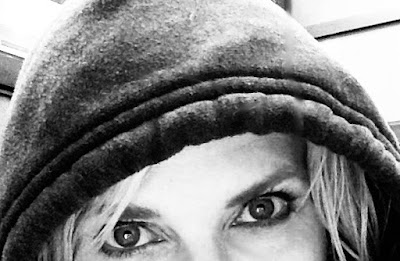 |
CoSo and me in February 2021– right after his "adoption."
|
I've wanted to share this customer service story for a while now.
But I've hesitated. It involves some rule-breaking and I didn't/don’t want to get the company or the employees who made it possible in trouble. Even though the organization might be revealed in the photo above or descriptions below, let's keep this between us.😉
Gather ‘round, it’s customer service storytime!
During the pandemic, I ran.
And I ran.
And then I ran a bit more.
Running kept me somewhat sane.
Our little beach town was empty during Covid. No tourists visited. Locals kept to themselves. Everything was quiet.
During that time I went on some of the best runs of my life. I ran the whole town. I found courses I knew of but had never explored.
One of these paths took me past the amusement park in our city. It quickly became one of my favorite runs. A mile into it, I'd pass the arcade. In stark comparison to its normal joyful presence, the arcade was dark, silent, and empty.
Clearly visible behind the locked, sliding glass entry doors were two large bags stuffed with game prizes. Teal and pink sharks smooshed together in these transparent plastic traps. Each held a slice of pizza or a donut. Some faced forward, some backward, some upside down.
They represented a paused world. 😔
For months, no matter how fast or far I ran on that particular path, seeing those animated, happy faces gave me an instant boost of energy. I pretended that two of the sharks in particular cheered me on whenever I passed.
Eventually, with no end to the pandemic in sight, I decided I needed to bring one of them home.
I set my plan into motion by checking my connections on LinkedIn. I direct-messaged a leader in the company, but didn't hear back. Not to worry— I knew it was a long shot. At least it was a start.
Next, I made a call to my good friend who had just retired from the company. I explained my story and asked her who I should call. First, as only a good friend can say, she let me know that she thought I was weird. Ha! No surprise there! 🤪 Then, she gave me a name and number.
I was hopeful.
I called right away and presented my request.
Nope. He didn't have the authority to make that happen.
He directed to another team member, though.
I called that person and left a message.
I didn't hear back for a while.
I began to feel discouraged. This was stupid. They had way more important things to do. They were strategizing ways to make their business survive and keep their employees on the payroll...and I was trying to rescue a stuffed animal. 😳
(Just reading that last line makes me laugh!)
Eventually, I tried the contact again and got through. I told her my Covid running story and how the arcade prize sharks had cheered me on and cheered me up during tough times. I asked if I could buy one. I knew this was a policy violation: Prizes were to be won, not purchased. The arcade was closed indefinitely though, and maybe the rules had changed. She said she would get back to me.
And guess what? When she called me back the answer was
YES!
Because of these unparalleled times, the company would make an exception. 🎉 🥳 🎢
We arranged the date, price, and pick-up spot. Just in case I had a choice, I mentioned which shark I wanted (pink with donut, thankyouverymuch).
Only a few days later, I stepped foot on their property and left with three things:
- my giant pink, donut-holding shark
- a big smile
- immeasurable customer satisfaction
I was so happy!
I named my shark CoSo for Covid Souvenir.
He sits at my desk and still cheers me on! CoSo and his lookalike prize peers brightened my days during one of the most challenging times our world has ever faced. ☀️ I am grateful to have him home as a reminder.
But wait!
This blog post is about customer service, not me and CoSo.
This is about what happened when an awesome company broke the rules for a customer during the pandemic.
By breaking those rules, they cemented my adoration, loyalty, and respect for their business.
Since becoming the owner of CoSo:
- I look at the company even more favorably.
- I talk about the company with even more enthusiasm.
- And though I was already a fan, now I am a super fan.
That is service magic right there. ↑↑
In my customer service classes, I don't endorse breaking the rules. As a customer, I don't expect service providers to break the rules for me, either.
Rules enable service consistency around processes, protocols, and fairness.
As service providers, most of the time we cannot and should not break the rules.
And in extraordinary circumstances, with the right intent and the appropriate approval, sometimes breaking the rules is the just the thing to do.
What has a company done to make you a super-fan?
What have you done to create super-fans for your company?
More customer service lessons can be found here:
Challenging Customers
HERO Service
Lessons from Disney: We Don't Have Bad Days
Lessons from Disney: Everything Speaks
CoSo made his blog debut here in this short post about Feedback





